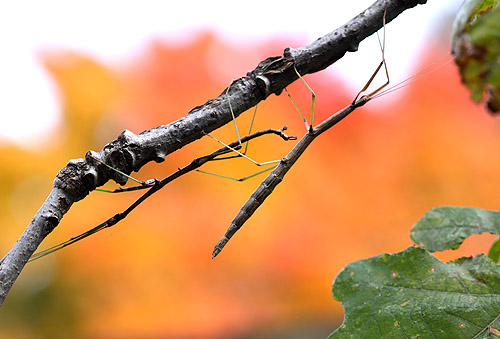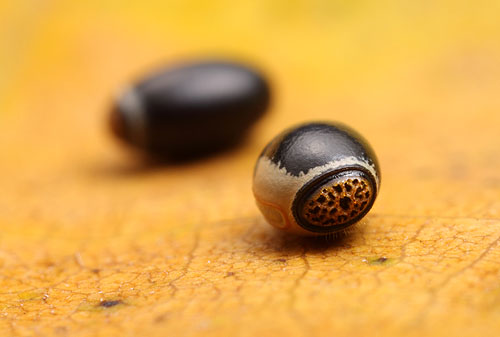
Male (left) and female Diapheromera femorata
Myrmecos blog commentators identified Sunday's mystery photo almost instantly as a stick insect laying an egg. The species is the Northern Walking Stick Diapheromera femorata, a common local insect easily collected by beating tree branches. We've taken a few home as pets, and the females are obligingly dropping several eggs a day.

The eggs of D. femorata resemble plant seeds
Photo details (top): Canon 100mm f2.8 macro lens on a Canon EOS 50D, ISO 200, f/5.6, 1/200 sec
(bottom): Canon MP-E 65mm 1-5x macro lens on a Canon EOS 50D
ISO 100, f/13, 1/250 sec, flash diffused through tracing paper
More like this
Rhipicera femorata

uau! fantastic pictures!
these eggs are really amazing!
What is its myrmecolgical importance? Are the eggs carried to the nest by harvester ants?
Great shots! I love these guys. I'm sorry to say the last one I saw was being dismembered by a rather upset Polistes annularis.
The eggs have an operculum that attracts ants, so the ants disperse the eggs. This is analogous to the elaiosome of ant-dispersed plant seeds.